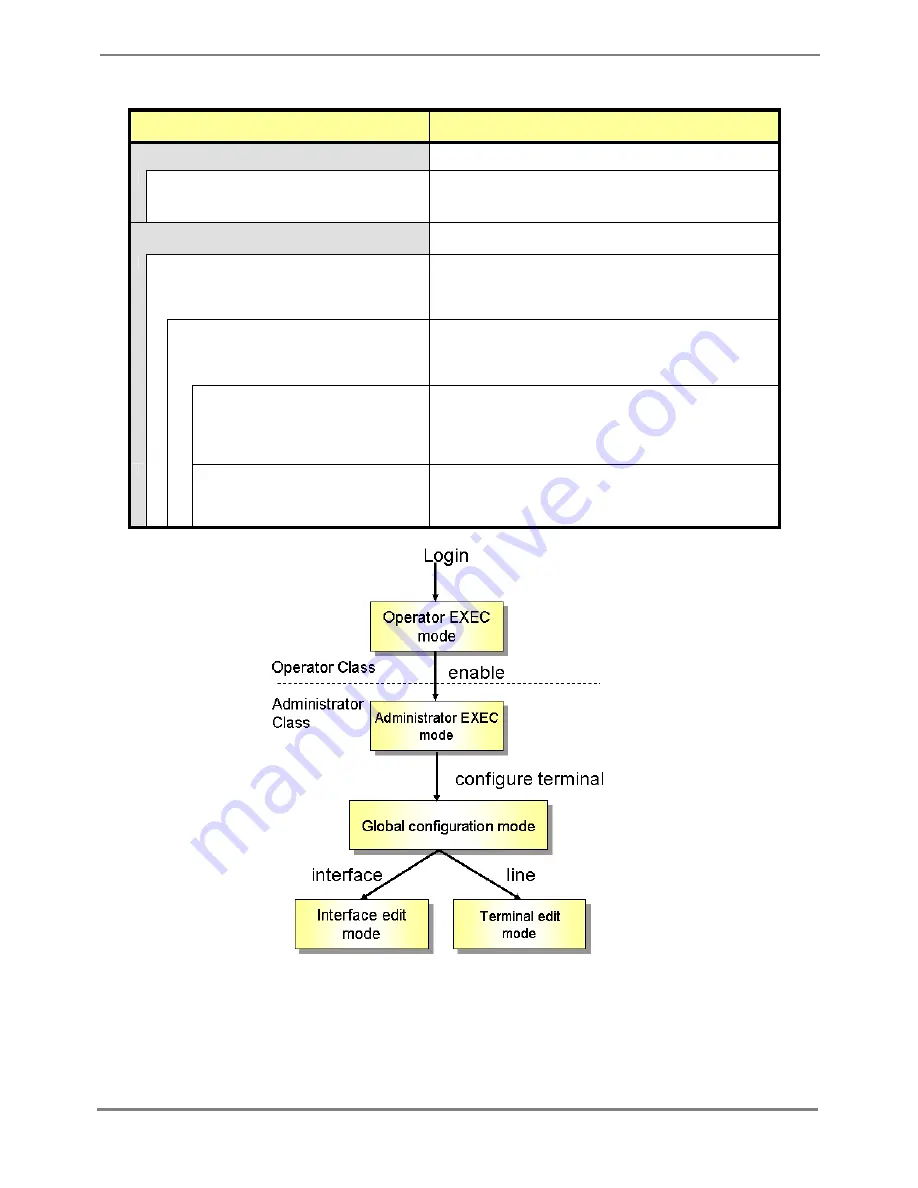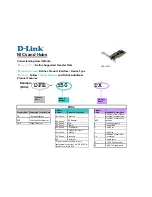
XG700 User's Guide
13/266
All Rights Reserved, Copyright (C) PFU LIMITED 2005-2006
2.1.2 Command Modes and Mode Switching
The following table shows a hierarchy of command modes and mode switching.
Command Modes and Prompt Text
(host name for XG700: xg)
Outline
Operator class
The initial-level operating mode entered upon logging into the
system.
Operator EXEC mode
Prompt:
xg>
Allows access to commands that have no effect on the switch
operations.
With the XG700, this mode is mainly used to view its status.
The prompt changes to "xg>".
Administrator class
To enter this level, use the "enable" command in the operator class
or type the administrator's authentication password.
Administrator EXEC mode
Prompt:
xg#
Allows users to perform operations that are related to the system
management of the XG700, such as date/time setting and firmware
update, in addition to those operations that are performed in the
operator EXEC mode.
The prompt changes to "xg#".
Global configuration mode
Prompt:
xg(config)#
To switch to the global configuration mode, enter the "configure
terminal" command in the administrator EXEC mode.
This mode allows the user to define the environment settings for
the XG700 that are to be saved in a configuration file.
The prompt changes to "xg(config)#".
Interface edit mode
Prompt:
xg(config-if)#
or
xg(config-agg)#
To enter the interface edit mode, enter the "interface" command in
the global configuration mode.
This mode allows the user to configure each port of the switch.
The interface edit mode is represented by prompt "xg(config-if)#",
while the edit mode for a port that is created with link aggregation
function is represented by prompt "xg(config-agg)#".
Terminal edit mode
Prompt:
xg(config-line)#
To enter the serial terminal edit mode, enter the "line console"
command in the global configuration mode.
The prompt changes to "xg(config-line)#".
Baud rate of the serial terminal and screen display size can be set.














































